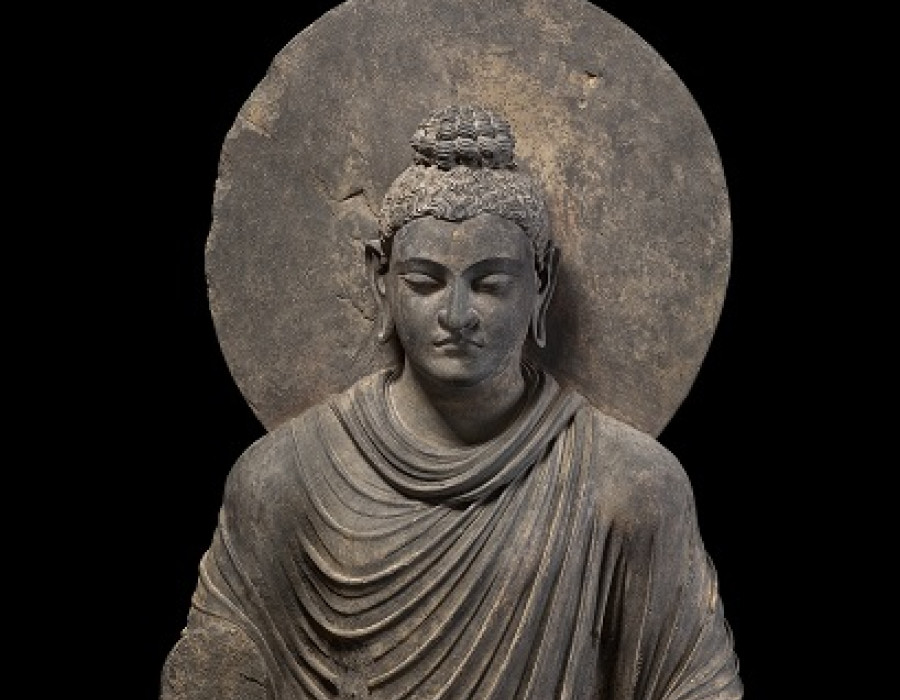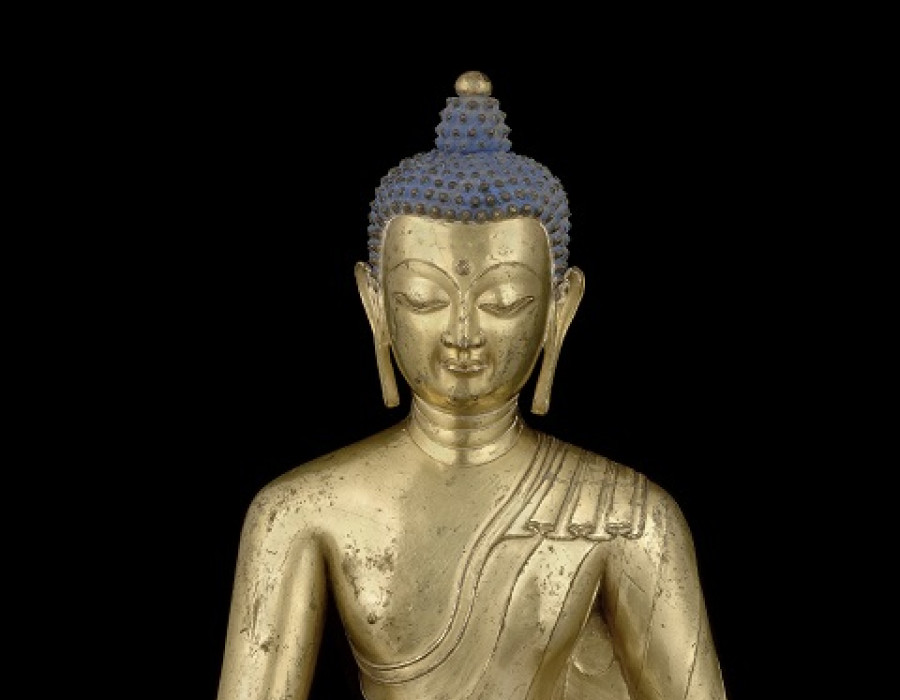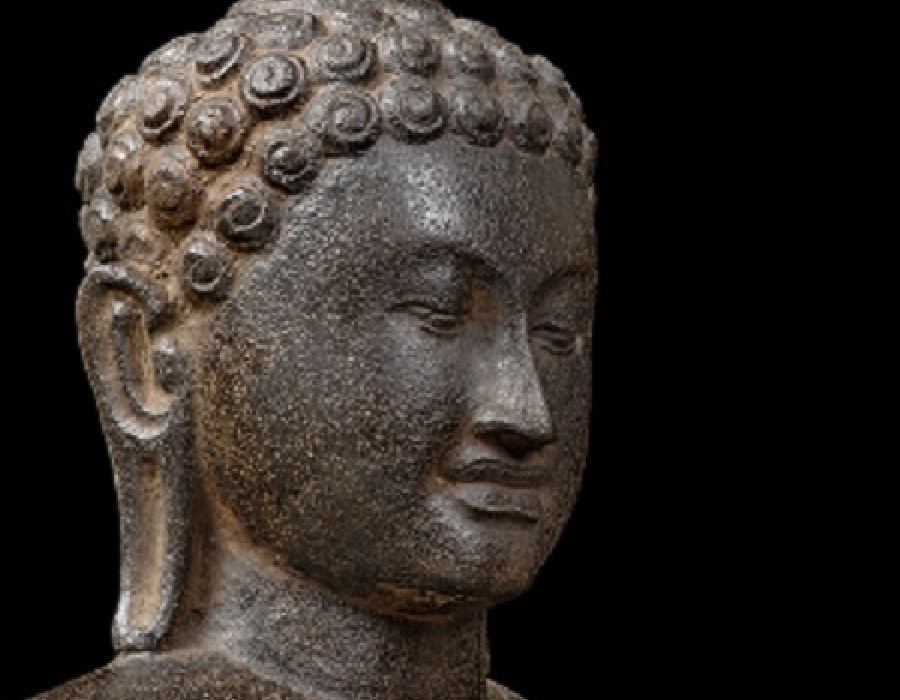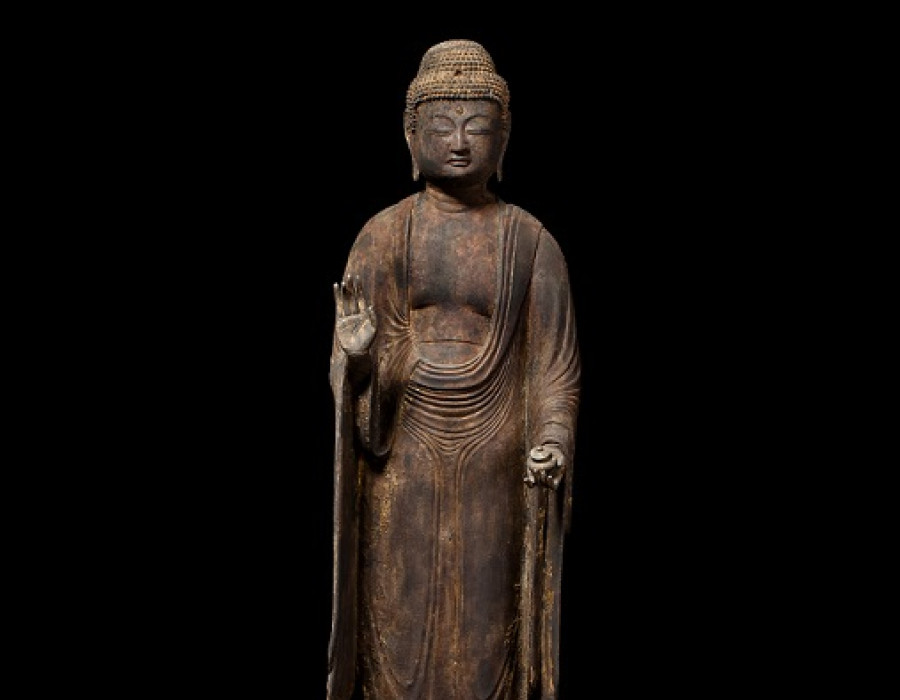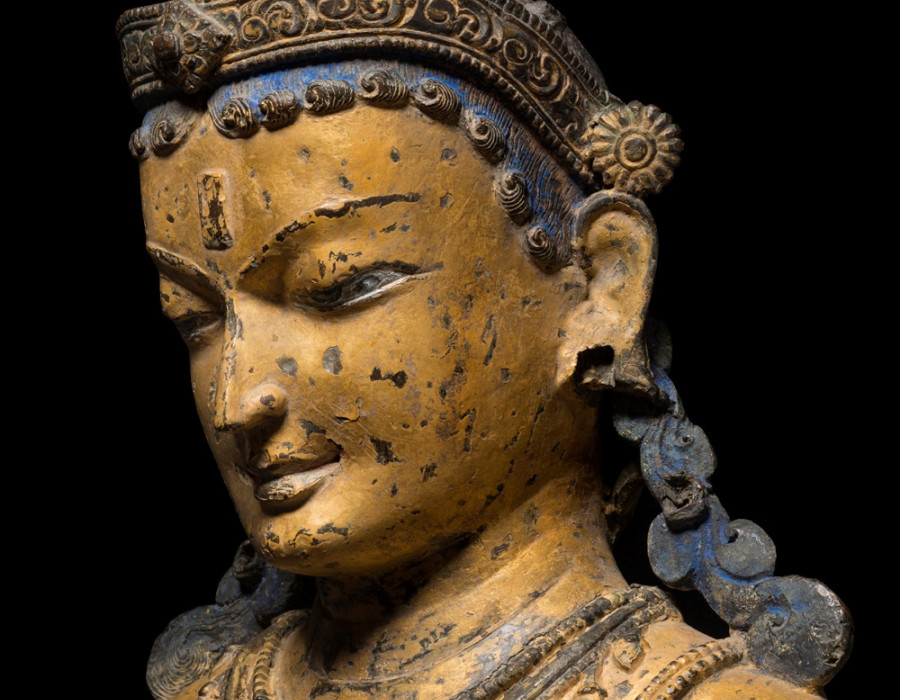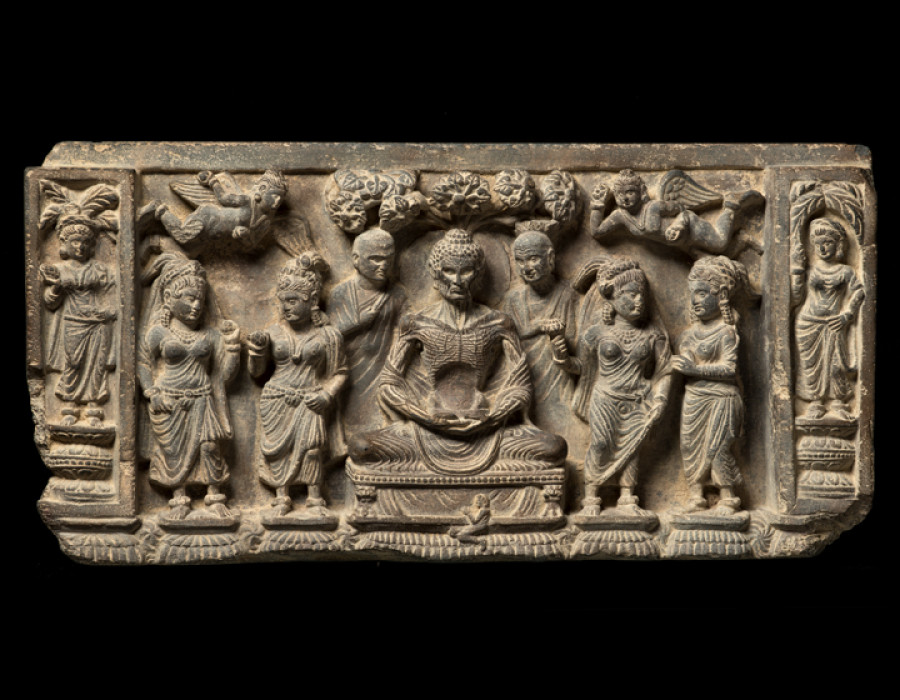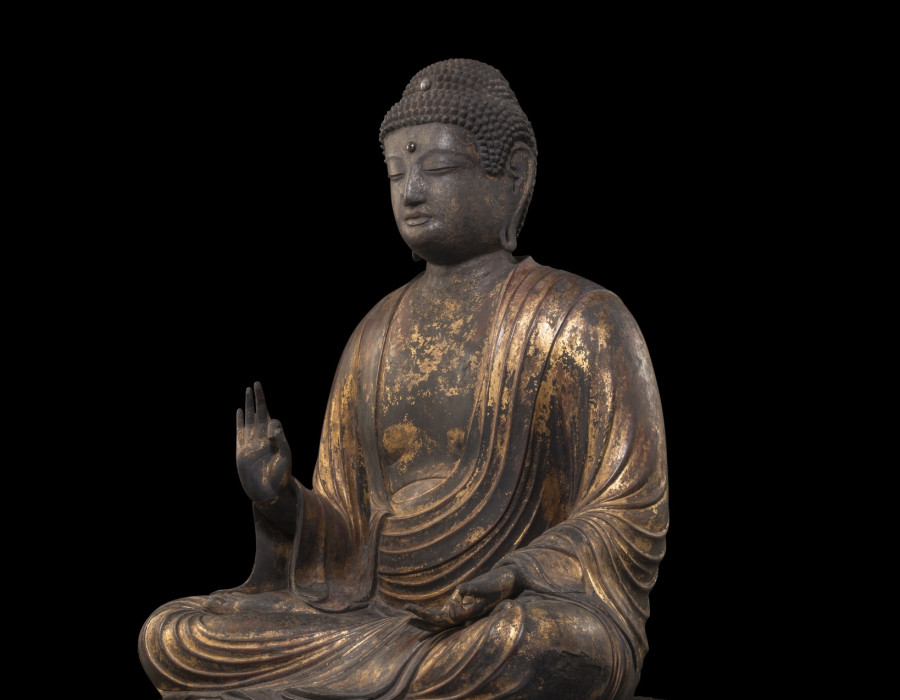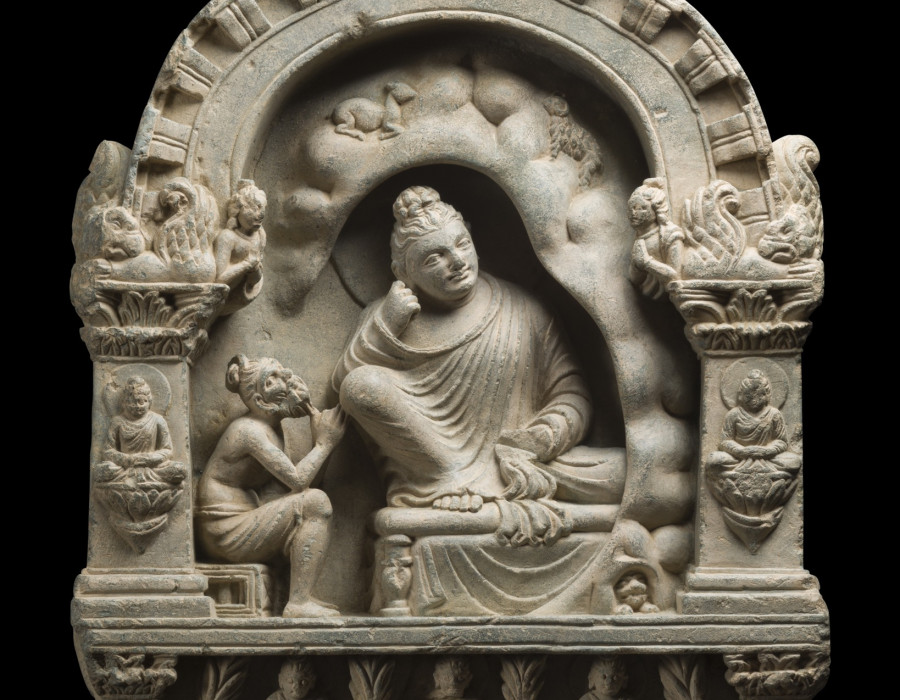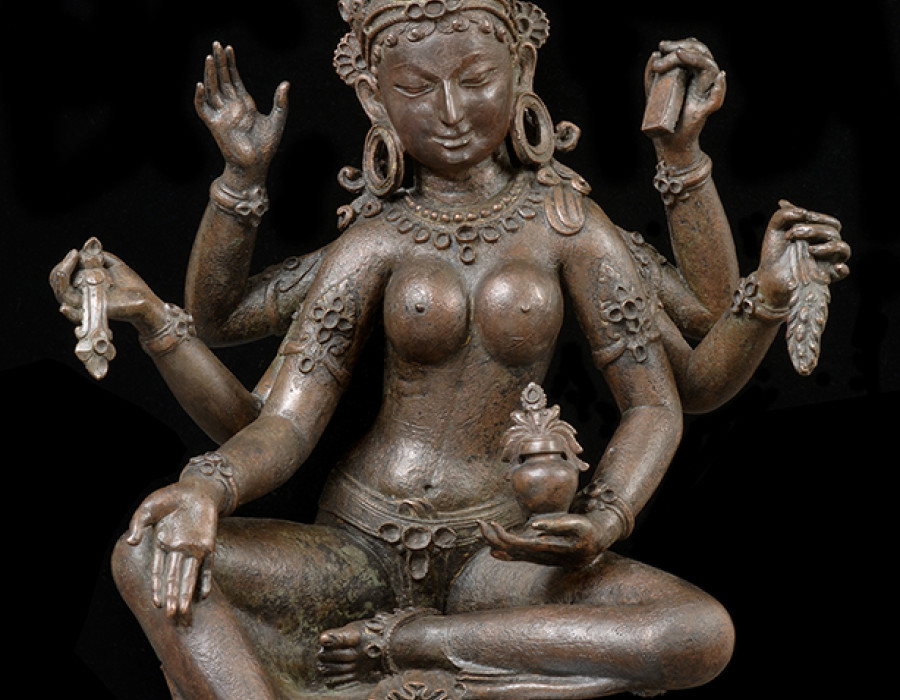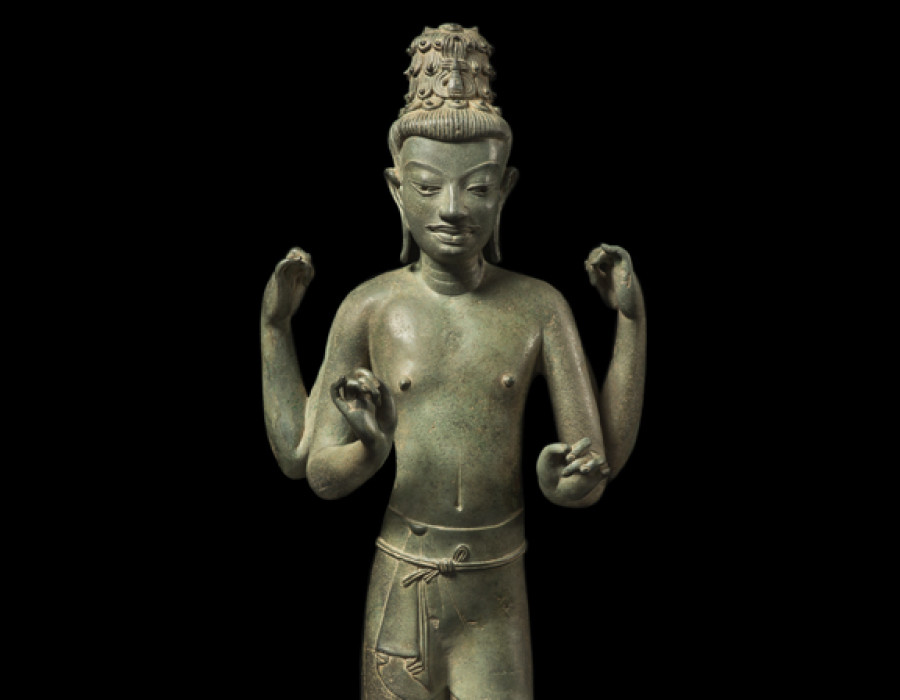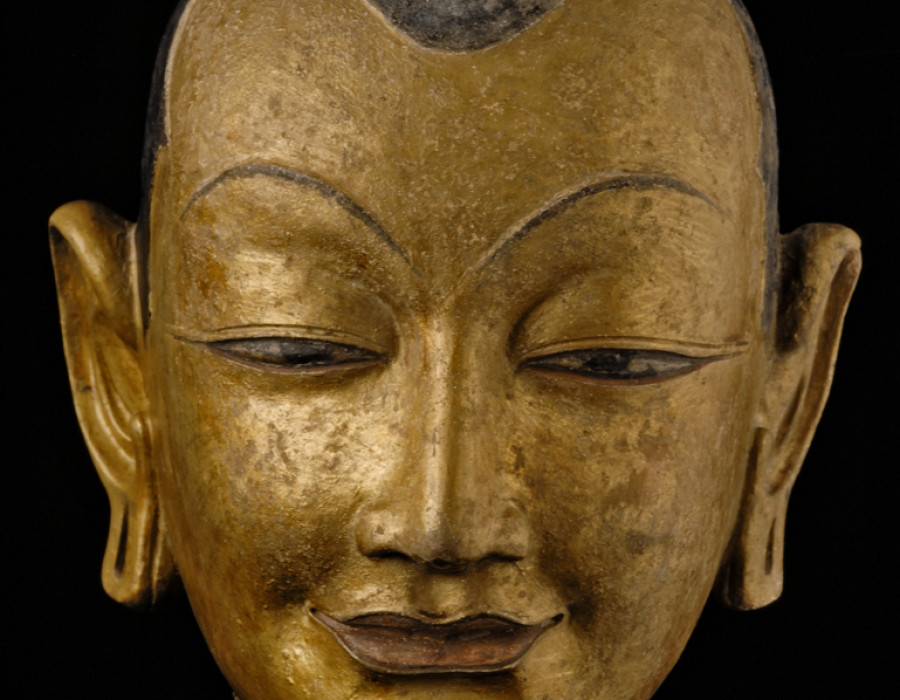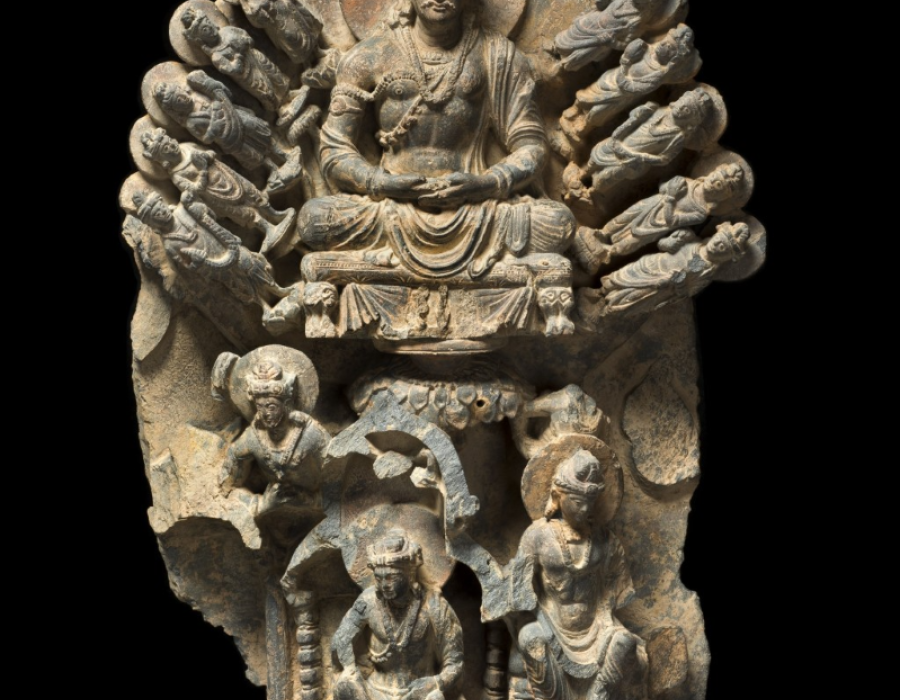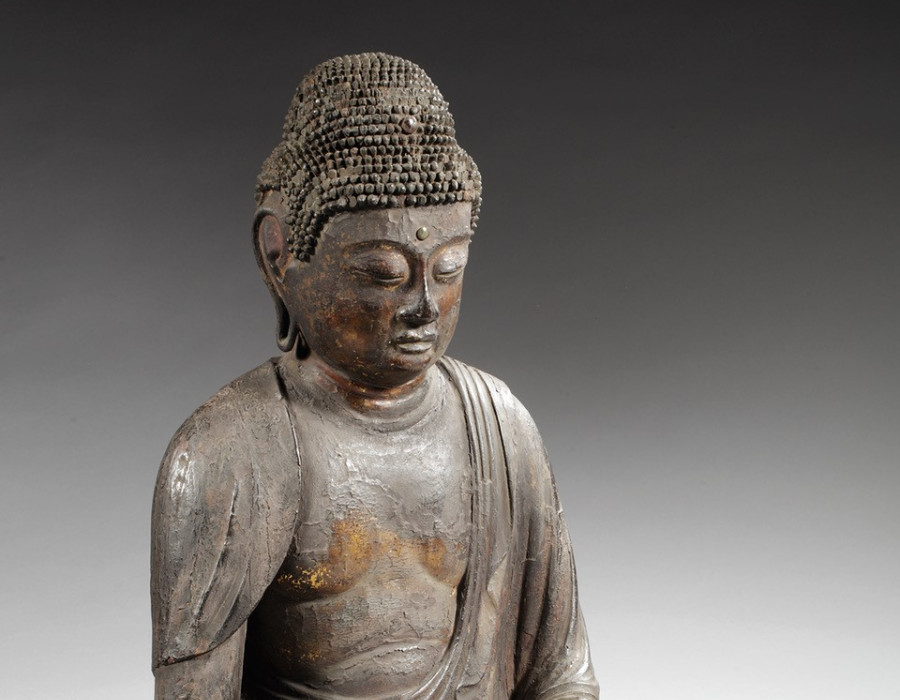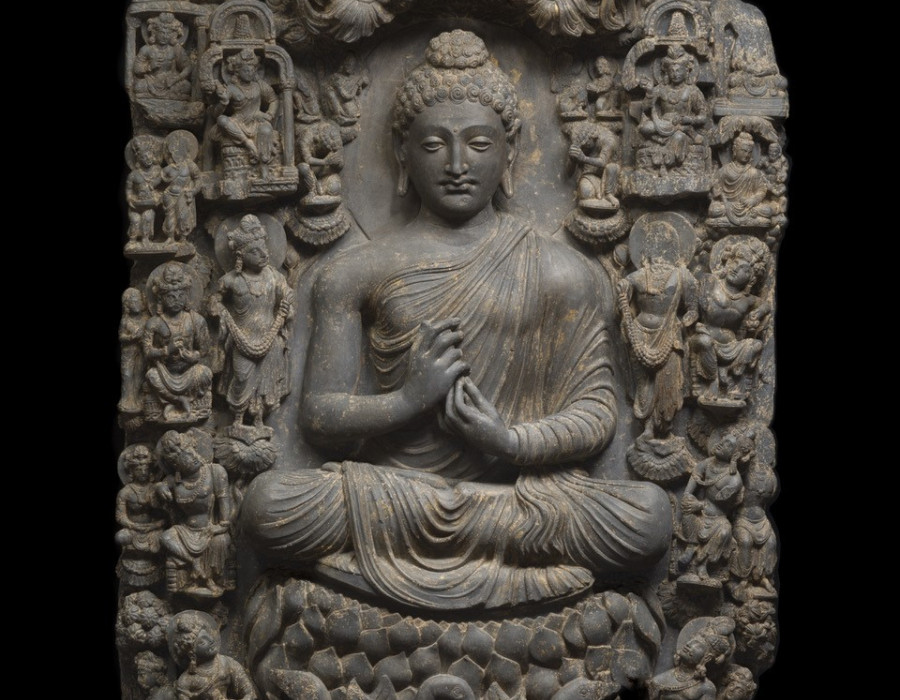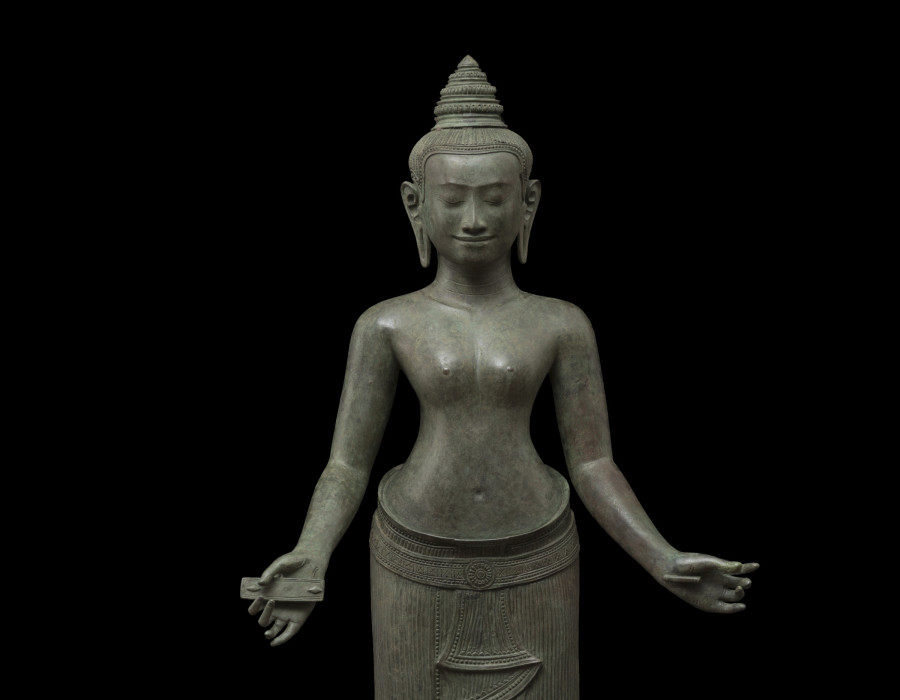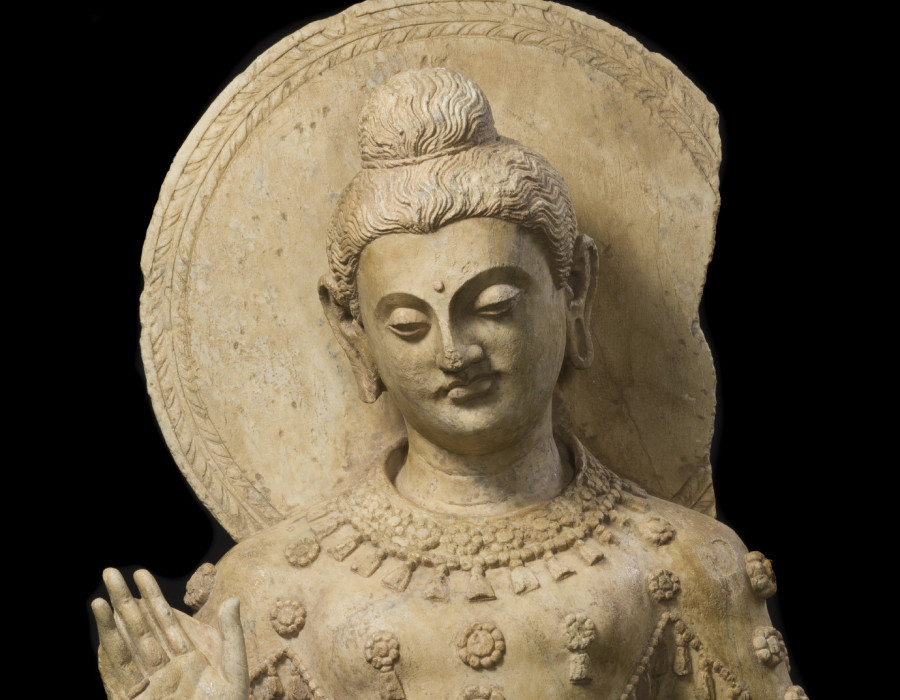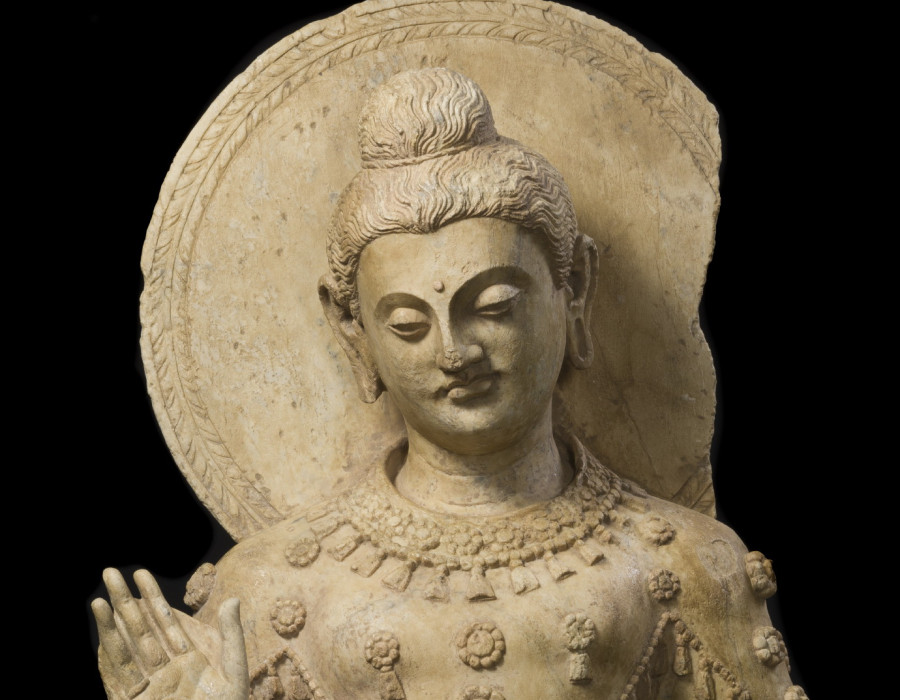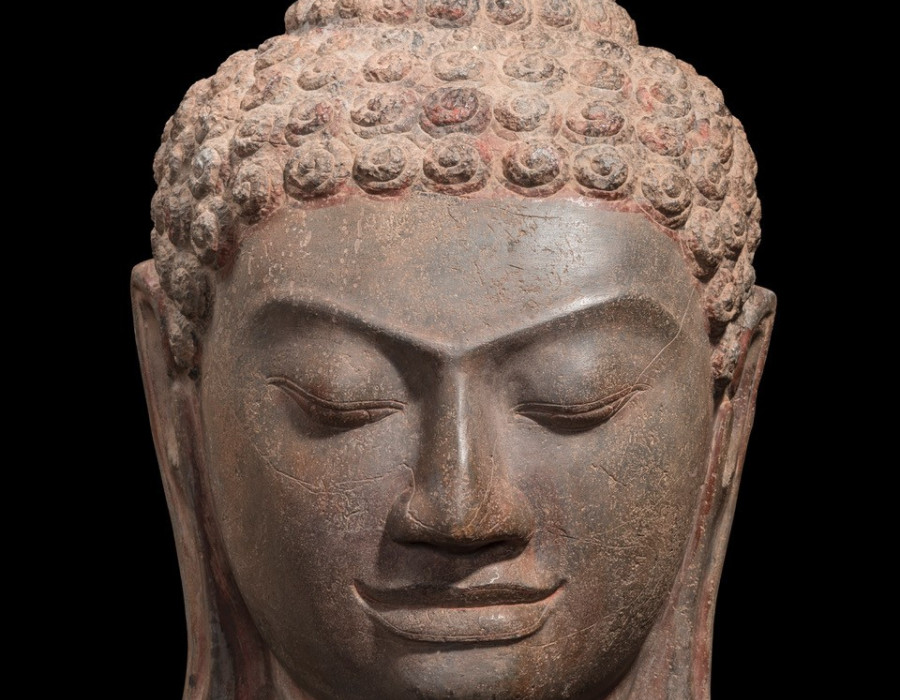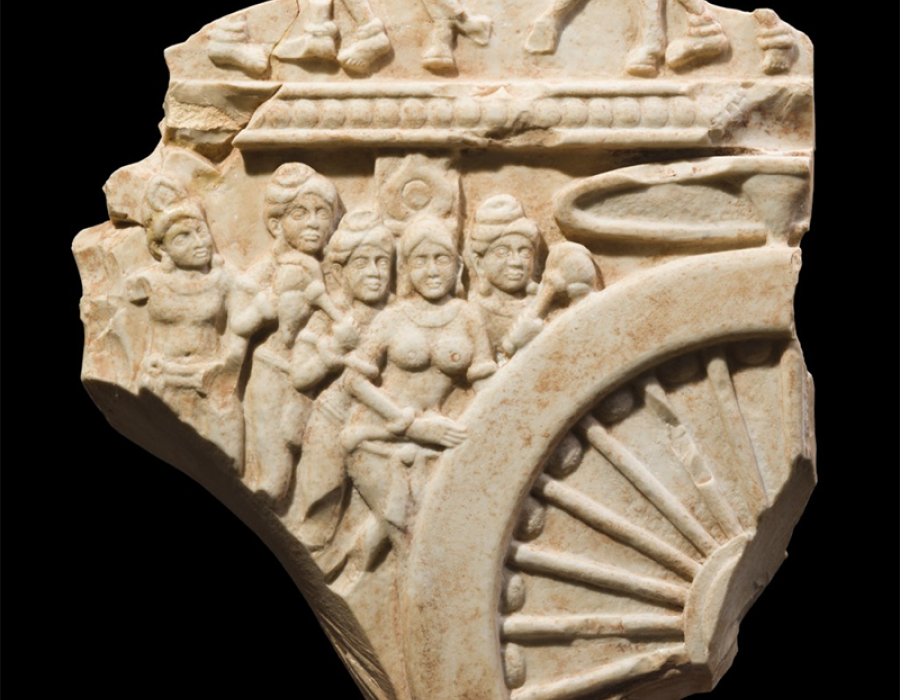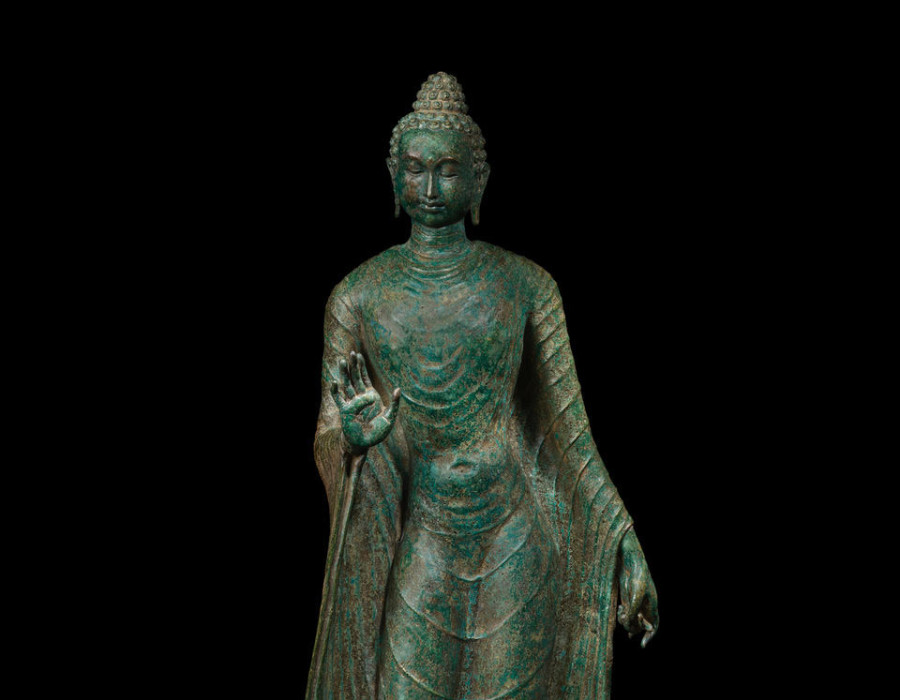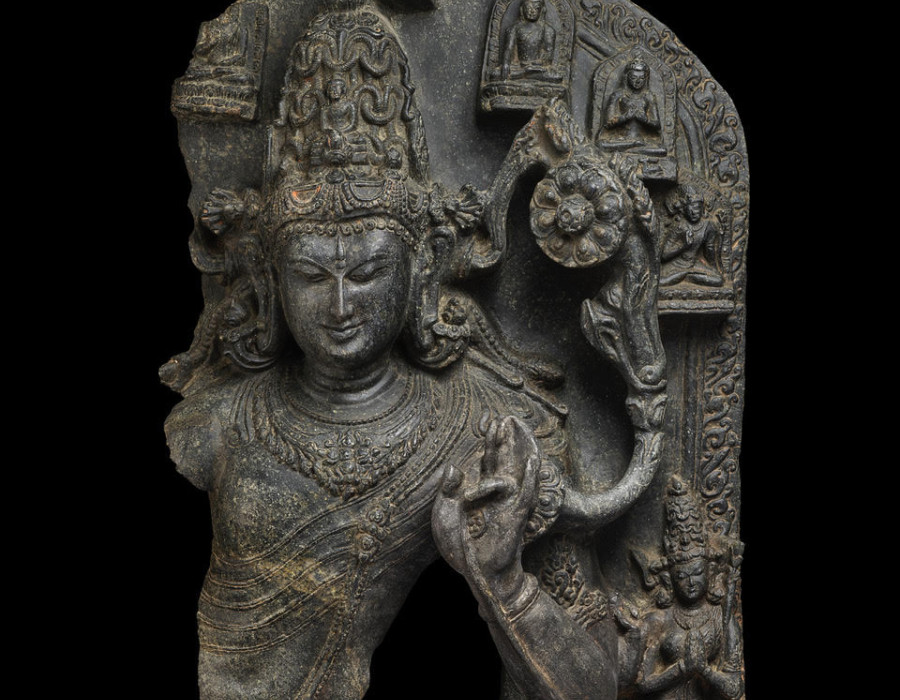
Martin Goodson
Images of Truth: Seated Buddha (Tibet) 13th Century
The golden body of the Buddha shines a spiritual light that points to the fact that the teachings must be realised in this very body, if they are to be understood completely.

Tibetan Seated Buddha
Seated Buddha
Central Tibet
Circa 13th century
Gilded bronze
Height 50cm
The serene, austere and glowing image of the Buddha holding his right hand in Bhumisparsimudra (earth-witness gesture) may be the Historic Buddha, Shakyamuni, or Aksobhya, one of the five Transcendent Buddhas. Both serve an inspirational role to students of Vajrayana (esoteric) Buddhism who dedicate themselves to intense study in order to acquire higher knowledge and the ability to conduct sacred rituals. After the 10th century, Tibet developed a theocratic culture and the great monasteries, which were allowed to levy taxes, also wielded political power; these establishments acquired wealth that was channelled into their spiritual activities. Sacred texts were copied and circulated and the monasteries maintained studios of craftsmen who painted murals and cast images. The exceptional quality of this Buddha suggests he emanated from one of the major monasteries of the period; his sophisticated appearance reflects the earlier influences of Kashmir and eastern India on the religious practices that evolved in Tibet in a period when the Buddhist faith was largely suppressed in India. Vajrayana Buddhism survived in Tibet thanks to the work of a few exceptional teachers and their followers, but in so doing it developed a unique character as it absorbed elements of non-Buddhist indigenous traditions; in this respect the image of the Buddha represents the survival of a form known throughout the wider Buddhist world in a region where the faith underwent a dramatic transformation.

Seated Buddha from Tibet (head and shoulders)
The Buddha calls upon the Earth to bear witness to his attainment. Earth is one of the four Great Elements of antiquity; these four qualities were believed to be found in all things, at all times, everywhere.
The quality of ‘earth’ is substantive, concrete and immanent in all its connotations and as such this Buddha is drawing us away from our ‘fancy ideas’ and perhaps even to our ‘lofty ideals’ to actually take a look where our own feet stand.
His physicality, his actuality, is underlined by the golden hue of his body. The old narratives (suttas or sutras), claim that the body of the Buddha shone like gold. Should we take this to mean that his body actually shone with some eerie light?
Perhaps we should consider it an indication of his spiritual radiance which was not just a set of brilliant teachings in the realm of ideas only but something that was lived in and through his body.
Is not this gold, the supreme value of the teachings?
There is a teaching called The Triple Wisdom. The First Wisdom is called – hearing with the ear. We might also say – reading with the eye, for this is often how we come across the teachings of the Buddha in the first place. We read books; we go to lectures or see something on TV or the internet. If the teachings resonate in the heart then it moves onto the next Wisdom – pondering in the heart. At this stage we become aware that what the Buddha’s teachings say measures up in some small way to our own experience. His words reflect our own sense of loss, our own sense of yearning and wish for fulfilment and peace at heart.
At this point danger lurks!
Feeling fulfilled by the intellectually satisfying ideas within Buddhism does not and cannot, of itself, last long. When plunged yet again into another one of life’s crises these ideas, no matter how noble or wonderful they seem from the comfort of the armchair, flee into forgetfulness.
This is why the Third Wisdom is so important – practice with the body. The actual putting into practice of these teachings: adhering to the precepts, the practice of mindfulness in all aspects of our daily life, meditation, devotional practices – all these extract from the ore of the teachings the gold which ennobles the life of the practitioner and those with whom s/he comes into contact.
When we behold the Buddha touching the earth we see a call to action. We do not see him spouting endless opinions, as we are wont to do. Instead he shows with and through the body his understanding and he calls on us to do the same.
Images of Truth
Buddhist art and iconography

